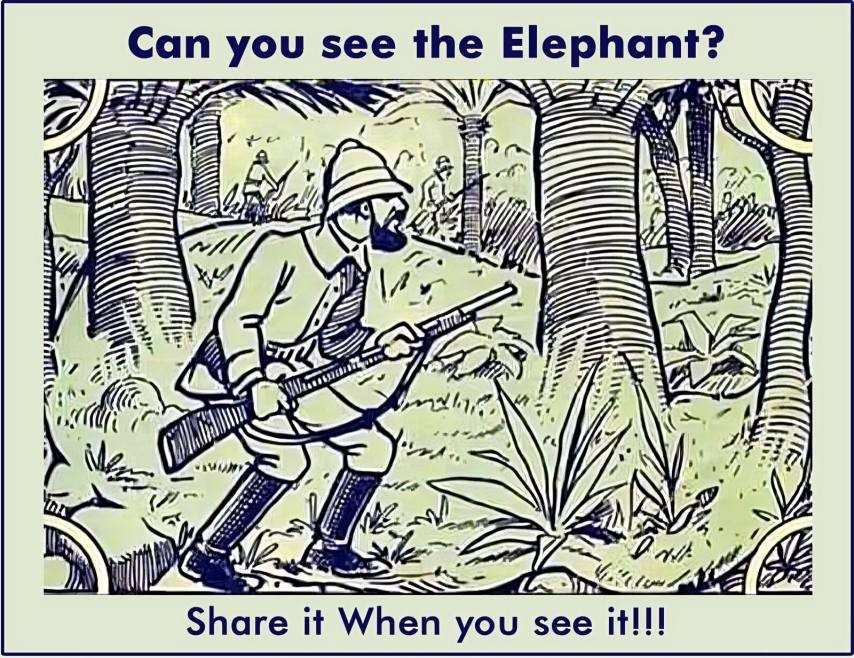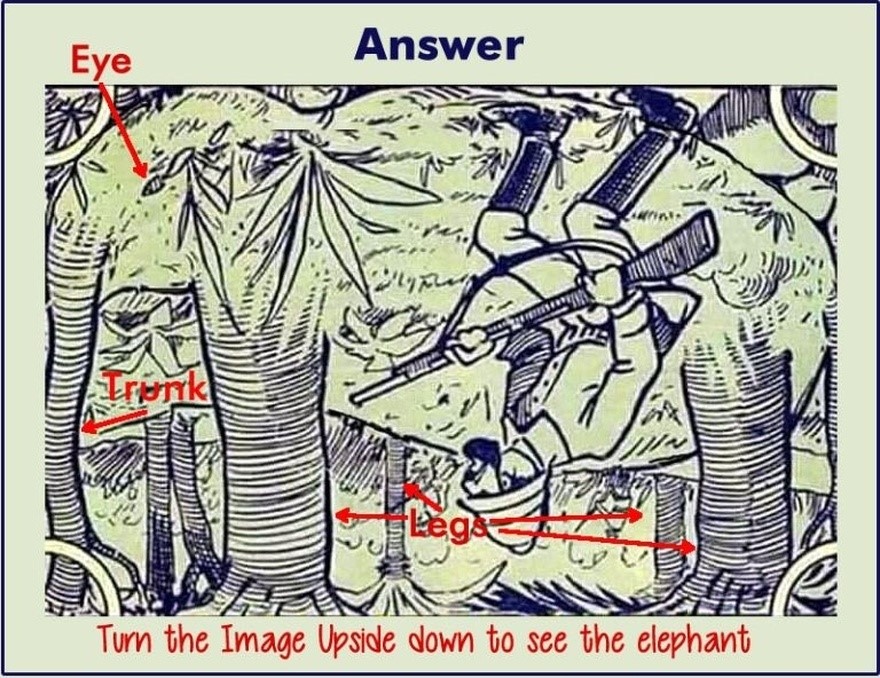When it comes to optical illusions, few challenges are as intriguing as spotting hidden images in a sketch. One recent brain teaser has left thousands of people scratching their heads—and it involves finding an elephant cleverly hidden in a jungle scene. Believe it or not, only about 2% of viewers can spot it without help. Are you ready to test your observation skills?

At first glance, the image looks like a simple drawing of hunters moving through the jungle. There’s plenty of detail to soak in: trees, bushes, figures, and weapons. But lurking somewhere within all that chaos is the form of an elephant. It’s not immediately obvious—and that’s exactly what makes this visual puzzle so fun and frustrating at the same time.
Take a good look. Scan the trees. Check the shapes of the branches. Examine the outlines of the hunters themselves. Sometimes our brains are so trained to see familiar scenes that they miss hidden patterns woven right into the obvious ones. In this case, the artist masterfully blended the elephant into the background, turning a familiar animal into a camouflaged masterpiece.
Still not seeing it? Don’t worry—you’re not alone. The human brain tends to focus on what it expects to find. When we see hunters and a dense jungle, we naturally look for more hunters, animals in motion, or clear separations between figures and background. But to find the elephant, you need to look at the entire scene differently.
Here’s a little hint: sometimes flipping your perspective makes all the difference.
Ready for the big reveal? If you turn the image upside down, the hidden elephant suddenly becomes clear as day. What once seemed like random lines and disconnected shapes instantly reorganizes into the recognizable form of an elephant, complete with its trunk, ears, and large body. It’s almost magical how quickly the brain reinterprets the image when given a new point of view.
This clever optical trick works because our brains rely heavily on context and orientation when making sense of visuals. When an image is upside down, we’re forced to focus more on raw shapes rather than familiar patterns, making hidden objects easier to spot. It’s a fascinating glimpse into how flexible—and sometimes unreliable—our perception really is.
These kinds of puzzles are more than just fun distractions; they actually provide insight into how our brains process information. Artists, psychologists, and researchers have long been fascinated by how people interpret visual input differently based on expectations, experiences, and even slight shifts in perspective.
So, did you spot the elephant on your own, or did you need the upside-down trick? Either way, it’s a great reminder that sometimes, all it takes to solve a problem—or find a hidden elephant—is to look at things from another angle.

If you enjoyed this visual challenge, you’re not alone. Optical illusions like this one are becoming wildly popular online, sparking debates, friendly competition, and even a little frustration. They remind us that seeing isn’t always believing—and that there’s often more to a picture (or a situation) than meets the eye.
Next time you’re faced with a tricky visual puzzle or even a real-life challenge that seems impossible, think about this elephant. Maybe all you need is a fresh perspective to uncover the answer that’s been right in front of you all along.





